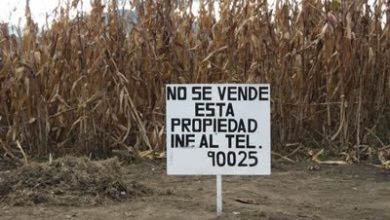Automated Cadastral Certificate from a CAD / GIS
Issuing a land certificate in optimum time is vital for the provision of services in the areas of Cadastre, can be mechanized without much effort, ensuring the efficiency and decrease of human errors.
In the old days, when we worked with the municipalities, when a user requested a measurement and cadastral certificate, half of the work was the inspection and measurement in the field; The rest was to work on the map cabinet and fight scale templates to ensure that the certificate was true to the data within the database.
Of course, if the demand is low, the hours invested in downloading the data, drawing, validating against existing maps, creating the table of directions, distances and scale template, justify the morning of a technician who only likes to be watching videos on YouTube. But in a Catastro Directorate that is integrated into the Registry, which is going to receive multiple requests as required by law at the time of filing, it cannot afford to do it manually.
This is an example, which we publish to make visible the human effort of a few hours invested in developing an application that guarantees that the certificate is issued in less than 30 seconds.
The available inputs.
- The parcel information is stored in an Oracle Spatial database.
- Images are served via an ArcGIS Server WMS.
- The client tool they use is BentleyMap, a Microstation application for mapping.
As you can see, the existential situation is exclusive licensing, but when working with public institutions you have to use what is available, if you do not have the power to move trends towards OpenSource. Others can do this with other applications, in our case we should have done with what existed.
The data requested by the application
Visual Basic for Applications (VBA) was used for the development. Although we had previously made the tool for Microstation Geographics, making the change implied simplifying many crazy things that were previously done on DGN files, looking for a faster execution taking advantage of the new functionalities available.
The form requests data in a single display:

- The cadastral key, with a mask adapted to the format. In this case, Department code, Municipality code, Sector and property number.
- It allows the option that the certificate bring the names of the owners, the cadastral key or the land numbers in the centroid of the plot.
- You may be given the option to bring the background image from the WMS service.
- It can be selected to be thematic the property with a transparent fill.
- As for the scale, the application looks for the most adjusted to the property plus an extra range, if for some reason it comes out very tight you can give the option to look for the following scale in 125x factors.
- Finally you have a field to add observations and a progress bar.
The result
Once the process is executed, the application does the routine that the user used to do manually:
 Connects to Oracle Spatial, and searches for the property with the selected key selected.
Connects to Oracle Spatial, and searches for the property with the selected key selected.
- It takes the range data of the object (x, y minimum and maximum), to this it adds a percentage so that the property does not go out adjusted to the frame, and of that range it brings all the landings intersected by that quadrant.
- Then, the application creates a model, making a cut out of the box and placing the template that has already embedded the module and logos ..
- From the database, it captures the owner information, address, calculated area, etc.
- From a web service consumes the barcode / QR code.
- And in the next sheet generates the coordinates, with their bearings and distances as would the user with CivilCAD or Civil3D.
Was the Microstation Geographics process simplified?
Without a doubt, although the simplification is seen more in other aspects than in the generation of a certificate. But among the gain, one can mention:
- The previous spatial analysis was crazier, since the properties are now on a spatial basis, the consultation is more agile; Before, the fact of having to verify which physical maps to bring to the index from a spatial query (which was another DGN) implied valuable seconds and more than once the risk of having modified the limit of a map and not updating the index.
 In the same way as the so-called context maps, before Geographics did not support image services, so it was necessary to call reference images that, although they were in light .ECW format, when done remotely, made the transfer heavy and slow. Now with a WMS the deployment is only called as a service, not as a physical file.
In the same way as the so-called context maps, before Geographics did not support image services, so it was necessary to call reference images that, although they were in light .ECW format, when done remotely, made the transfer heavy and slow. Now with a WMS the deployment is only called as a service, not as a physical file.
- Therefore the size of the text is advantageous, since before it was a text as annotation. Today the label can be applied, in order to create coupling rules to the size of the properties, like any other configuration of size formats that can be defined in the XML of the Feature Book, not necessarily in the template.
The attached video shows how the application is executed.
The challenge that comes becomes interesting, with an initiative that we are supporting in parallel: Do it from a QGIS plugin, not directly from Oracle but via WFS served with GeoServer, thinking not only about the optimization from the service but also because not all Municipalities have a BentleyMap license.





